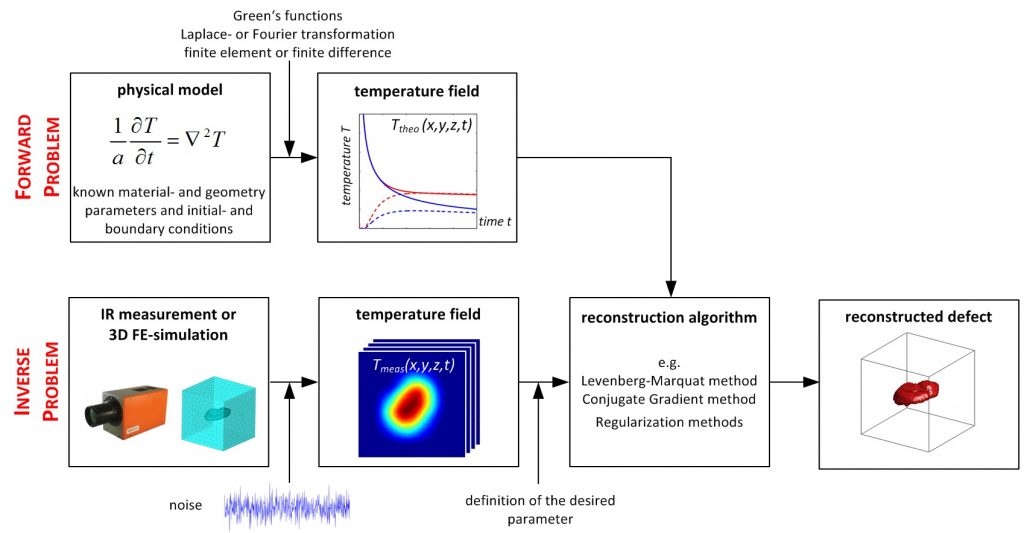A model is a notional description of the nexus of a real system in a mathematical form. A mathematical model consists of algebraic equations and differential equations based on physically regularities.
Simulations are experiments based on developed Models implemented into a computer program. By using simulations, knowledge of the model can be achieved, which can be transferred to reality.
The importance of numerical simulations rose drastically during the last decades. Due to the raising requirements on NDT results and the need of high-level NDT methods, simulation plays also a key role in this sector. Models and simulations are used in many steps in the NDT process, e.g. for the development of and verification of new inspection methods. Modelling and simulations enable a fast and economic analyzes of complex systems therefore the developing time and costs can be reduced.
In our group modelling and simulation is used to develop and verify new NDT evaluation methods and to reconstruct defects. Thereby the conjunction of finding and evaluating defects can be realized. Therefore physical models are used to solve the forward problem to thereafter use the results of the forward problem to solve the inverse problem. The main goal of solving the forward problem is to calculate a temperature field T(x,y,z,t) in a solid body assuming that all causal conditions are known. The term causal conditions means the knowing of the material parameters as well as the initial- and boundary conditions. For inverse problems the temperature field is known and by using a proper mathematical algorithm the cause (e.g. material parameter) can be calculated. The relation of the direct- and the inverse problem is shown in Figure 1.

Figure1: Forward and inverse problem based on a singular inclusion




